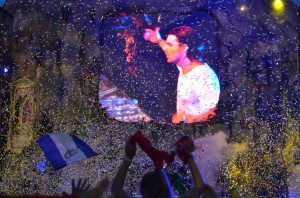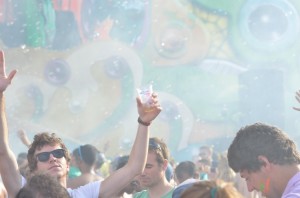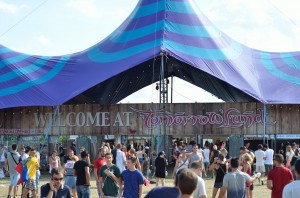ISE-researcher Fabian Holt has just written the book chapter “New Media, New Festival Worlds: Rethinking Cultural Events and Televisuality through a New Type of Music Festival”. The chapter is written for the edited volume “Over the Waves: Music and Broadcasting” to appear from Oxford University Press in 2014, and the case study used in the book chapter is the official after video of Tomorrowland 2011, which can be seen above.

This is one of the first publications based on his new research on media and festival history. The main contribution of the research is two-fold. First, it shows how the existing literatures have failed to understand cultural events and festivals within media history, and it offers a theory of how this can be done. Based on this theory, the chapter analyzes the evolution of televisual marketing in social media since the late 2000s and its role in creating new media flows and ultimately impacting on the experience of the physical festival sphere. This research draws from the intellectual tradition of medium theory in the analysis of how the proliferation of new communication technologies change how social worlds are perceived and how different forms of capital are exchanged between them.
YouTube and tourism
YouTube is really the dominant player in the new video culture of music festivals. The core analysis of “New Media, New Festival Worlds” offers an argument about the evolution of festival video in YouTube in an increasingly global media landscape. In its first years of existence, much of the content was created by amateurs, but after YouTube was purchased by Google and became commercially developed, new forms of strategic video marketing evolved. The company organizing Tomorrowland pioneered the shift from festival videos to festival movies that has a broader function than marketing in any conventional sense. With the broader development of online video, festival movies have a special role in creating international markets and boosting tourism. In “New Media, New Festival Worlds”, this is illustrated by the case of the official 2011 Tomorrowland after video that was produced for consumption via YouTube.

To theorize this, Holt draws on the literature on media events that was developed in relation to the evolution of the Olympics in broadcast television during the 1980s. In this perspective, Holt says, “a new process of mediatization of cultural events started in the late 2000s with social media and particularly YouTube, one that is distinctly different from the mediatization of sports event on network television in the 1980s”. This process is seen as marketing-driven and stimulating consumption “far beyond the time of the event” and developing new aesthetics and social worlds.
Music festivals provide fascinating examples of the cultural implications of the contemporary media landscape in which “few if any events generate a sense of having society’s undivided attention.”
Medium theory and sociology
Finally, the theoretical conclusions are framed within the traditions of medium theory and sociology. Here, Holt summarizes:
“The transforming powers of this new international televisual culture in popular social media service can be explained partially from a medium theory perspective and partially from a sociological inquiry into the existing trajectory of electronic music festivals.”

The advertising economy is one of the driving forces of new festival worlds, although festival movies from music festivals such as Tomorrowland in Belgium also do more than stimulate consumption. It seems that the new festival worlds themselves are produced as a form of strategic communication.
“New festival worlds are produced by festival marketers for YouTube distribution as a form of strategic communication, with the scripted annual after movies as core practice since 2010. The process, however, is driven by broader dynamics in the contemporary advertising economy.”
For more information, please contact Fabian Holt at fabianh@ruc.dk.
